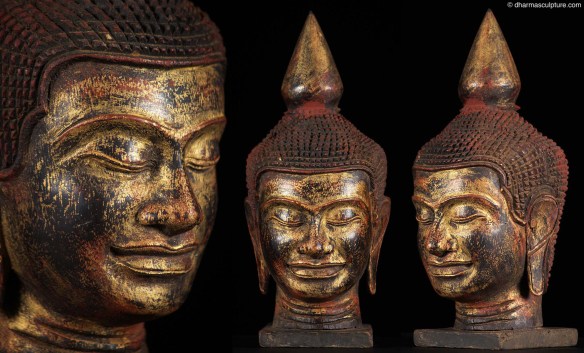Soapstone also known as “steatite” or “soaprock” is a stone which is notable for its high degree of resistance to heat. In Cambodia, soapstone, which mostly comes from the province of Pursat (in the western part of the country) has been used to carve religious effigies since the 17th century. Any variation in the color of the stone is inherent to the very nature of the material, its array varies from yellow-green to gray and deep purple.
This Buddha has a distinct Cambodian style. Lord Buddha is in the the ‘earth touching’ gesture or ‘earth witness’ also known as bhumisparsha mudra. He is seated on a separately carved single lotus base. Lord Buddha is depicted with heavy eyelids that evoke a mood of introspection and detachment, enhanced by the hint of a smile on the full lips. The distended earlobes, a legacy of Prince Siddhartha’s discarding his heavy gold jewelry further indicates the Buddha’s enlightened status. A simple yet elegant carving. It is unpolished and thus has a matte finish.
This sculpture is a one of a kind statue, hand carved by the very talented artists of Cambodia. Every piece is truly unique!
CLICK HERE TO SEE NEW ARRIVALS IN DHARMA SCULPTURE’S GALLERY

Like this:
Like Loading...









